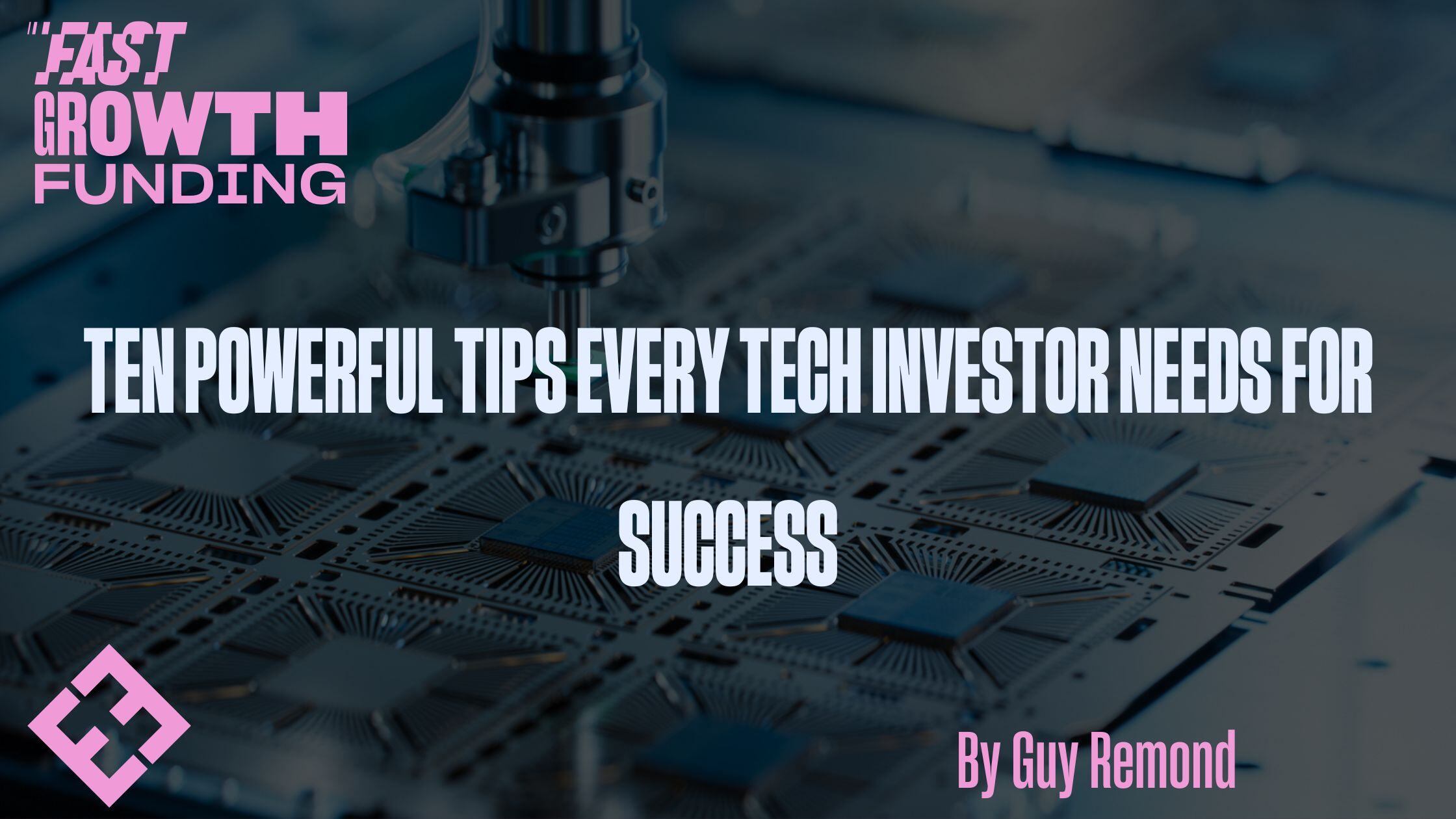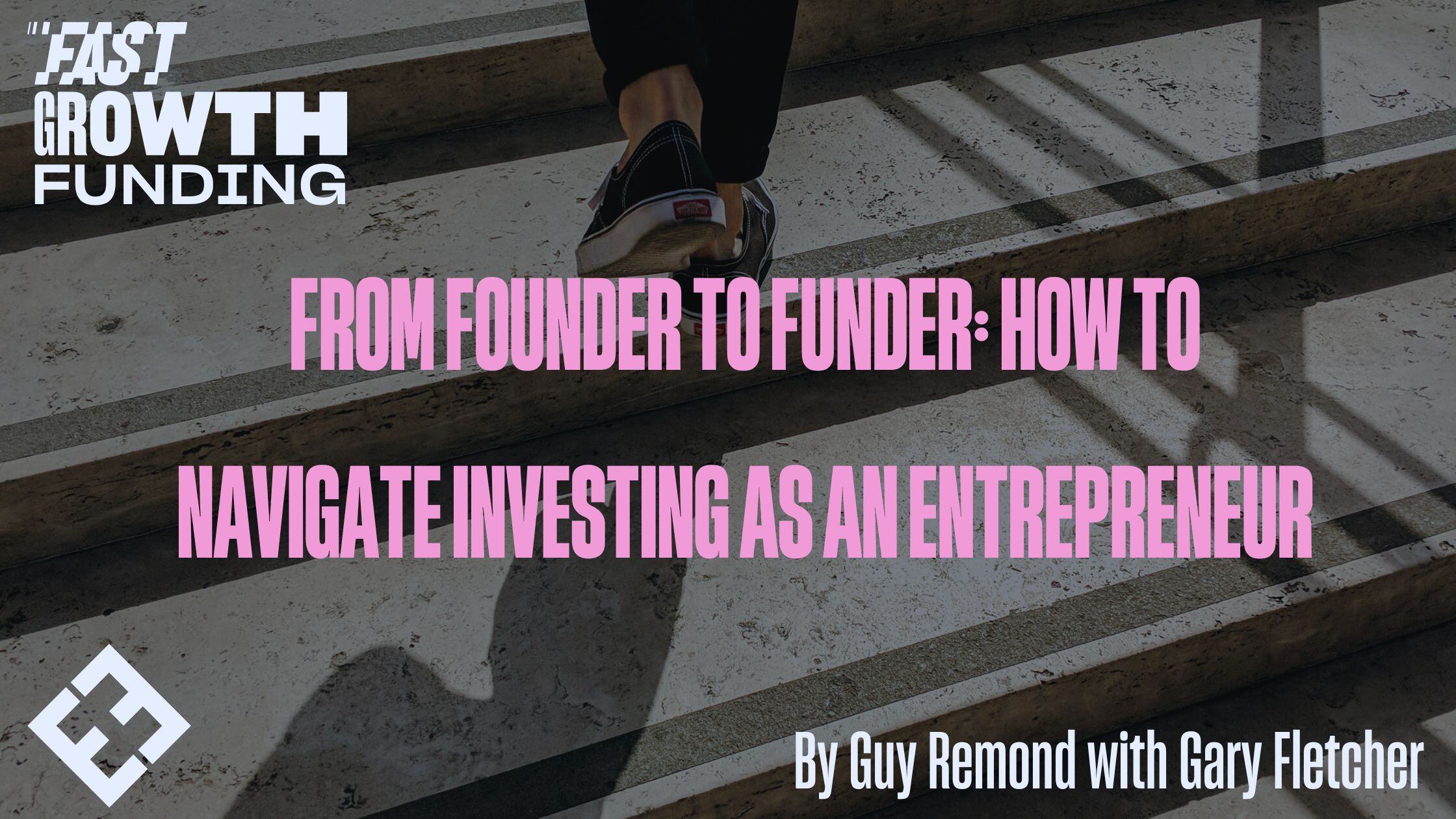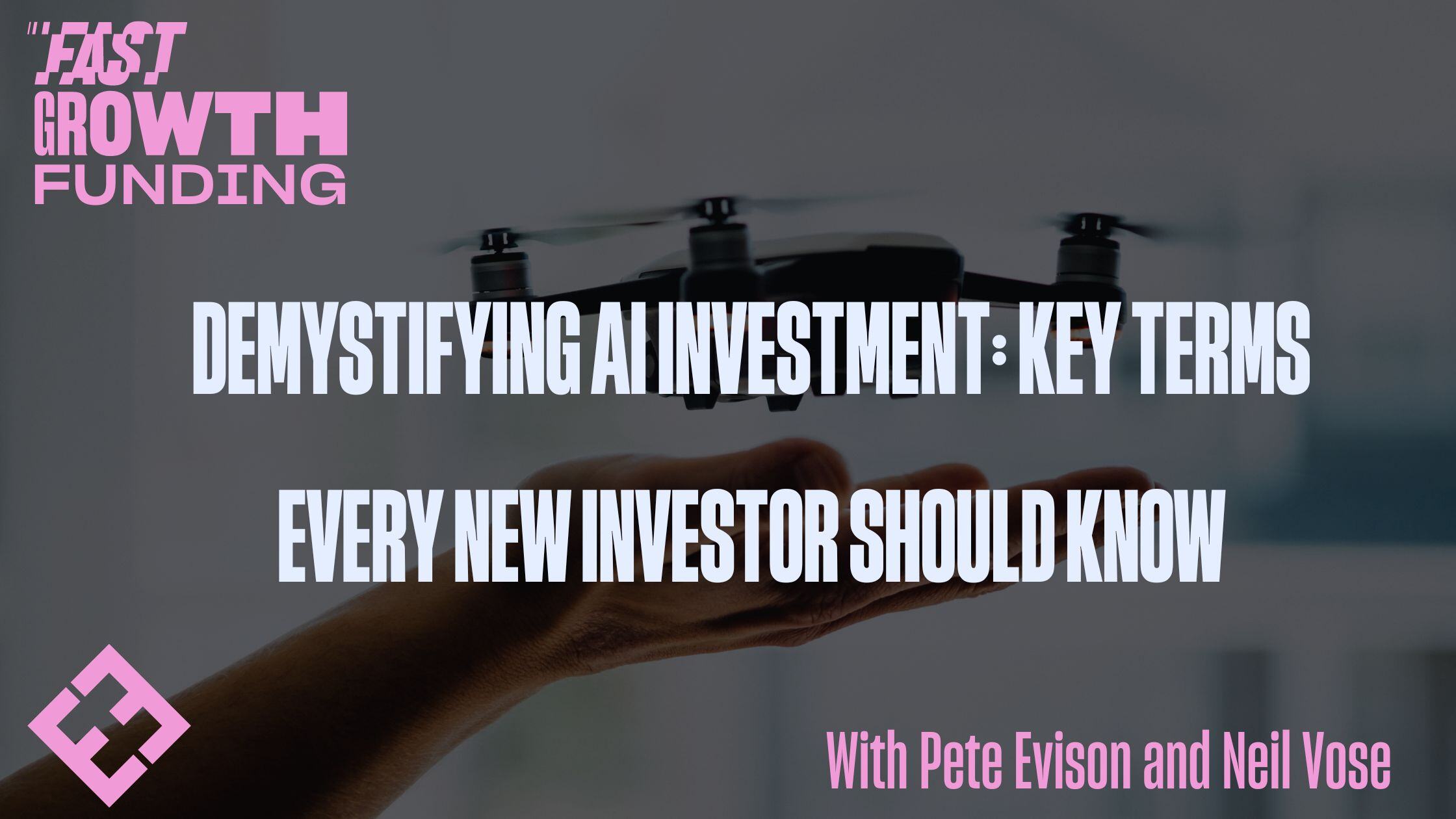From Founder To Funder: How To Navigate Investing As An Entrepreneur
By Guy Remond with Gary Fletcher
4 min read
Pete Evison : Mar 20, 2024 8:05:55 AM

By Guy Remond
So, you’re considering AI-led investing. What do you need to know?
It’s no secret that the world of AI has gotten very noisy. Consequently, there’s a need for investors to cut through the hype and sift the wheat from the chaff.
In Season 2 of the Fast Growth Funding podcast, we’ve been interviewing expert investors and entrepreneurs to extract actionable insights into how you can back the right ventures as an AI investor.
In this article, I’ll share the top ten tips I’ve gathered from these conversations. If you’re considering AI-led investing, these tips are guaranteed to help you succeed.
1. Look beyond the idea
While AI-led investing is on the rise, it’s easy for investors to get burned if they don’t know what to look out for.
Great ideas don’t necessarily spell long-term growth. A tech founder might have the best idea in the world. But unless they have other factors in place – a solid team, a high-growth strategy and the equipment needed to build and market the product – it could end up being a waste of time and investment.
That’s why it’s important to ALWAYS look beyond the idea. As an investor, you want to find out if the technology matches the expectations of the business. You need to look under the bonnet – and understand what you’re looking at.
2. Give yourself time if you’re an entrepreneur-turned-investor
If you’re an entrepreneur who has just exited your business, you might want to jump into something new right away to fill the gap. Within the first few months, you’ll likely come across many investment opportunities that seem exciting, and it’s easy to get sucked in too quickly.
However, it’s essential that you take some time to truly assess your situation and do some research before committing to anything.
I typically recommend giving yourself at least 12 months from your exit to decide what you want to do with the rest of your life, and the money you’ve made along the way. This way, you can get into the thick of things armed with the knowledge and personal conviction you need along this journey.
3. Prioritise tax-efficiency
Tax efficiency is a crucial part of investing – you want to spend your money efficiently and get as much return as possible. This means that any investor dipping their toes into high-risk ventures needs to balance that risk with some form of reward.
Luckily, there are ways to factor in tax efficiency. For instance, the government rewards investors for investing in high-risk companies in the form of the EIS scheme.
We understand how important this is, which is why our new AI fund focuses on EIS-qualified companies.
4. Join an investor ecosystem
Being part of a strong investor ecosystem stops the frustration of backing the wrong ventures. You can benefit from other investors’ shared knowledge to pivot and align your portfolio with the market’s movement.
My business partner, Gary Fletcher, and I have made it a habit to attend the Abundance 360 summit every year. It’s a conference that looks at the future of tech and features insights from high-fliers in the tech sector.
Attending this summit (and others like it) gives us a real feel for where tech is going. This is incredibly beneficial for any investor because when you’re filtering the hundreds of pitch decks on your table, you need to know whether the company is headed in the right direction.
No one wants to back a venture that will probably not be relevant in the next few years!
5. Look for businesses using AI to build efficiency
In today’s landscape, it’s possible to build a great business without having to shoehorn AI in just for the sake of it.
With our new fund for early-stage and growth AI investments, we’re looking to back businesses with a core strategy around AI for their product. But that’s not where it ends.
We’re also looking at how companies use AI to make themselves more efficient internally – and we discussed how this might work in episode six of Fast Growth Funding.
6. Pick a fund with the right people behind it
If you’re considering AI funds, you have to look at the whole financial picture. You need to have someone who can step back and manage it properly, and see the risks and the potential returns.
When you pick the right fund with the right people behind it, these kinds of investments can be terrific and provide a lot of value along the way.
7. Think about IP protection
For early-stage tech startups, investing in an IP strategy can lead to significant increases in valuation, which comes in handy during funding rounds.
If the valuations have doubled compared to what they would have been without patents, the founders will get much more bang for their buck when raising funds. This means they can either raise more money for the same level of equity, or they can reduce the equity drain, and still raise the same amount of money.
From an investor’s perspective, with this increased valuation, you may see higher returns on your investment as IP assets can lead to increased revenue streams through licensing, royalties, or being a key differentiator in the market.
8. Vet each founder’s brand
As an investor, you can probably relate to reviewing multiple pitch decks each year. But what exactly are you vetting the deck for? In today’s world, people buy people. Consumers aren’t just looking for an idea, they’re also looking for (and vetting) the people behind it.
This means that to prove their startup is investable, founders need to showcase their individual/personal brand in the pitch deck. Does the founder have what it takes to live, breathe and own that idea? How sure are you that they’d be able to sell it to their target audience?
A large chunk of business success hinges on the ability to sell a good story – and that’s one thing you need to be on the lookout for.
9. Prioritise long-term potential over short-term gains
As an investor, you’re not just looking for a massive quick win at the start. You want to see the progression – real incremental growth – even though this may not always play out within a short period.
Prioritising long-term potential over short-term gains can lead to more stable returns, as companies that show consistent growth are often better positioned to adapt to market changes and challenges.
Plus, you’ll be mitigating the risk of investing in businesses that may initially appear promising, but lack the substance or strategic vision to maintain their success.
10. Look for founders who prioritise content in their go-to-market strategy
You’re probably thinking: what’s content got to do with it?
From an investor’s perspective, seeking out founders who already have a robust content marketing approach in their go-to-market strategy could yield better outcomes.
It means that the founding team has a comprehensive understanding of how to connect with their audience, drive engagement and convert interest into loyalty and sales, which are critical components for startup growth.
To recap:
I hope you’ve found these tips useful.
If you’d like to learn more about our new EIS-qualified fund for UK early-stage and growth AI investments and get in front of genuine, profitable opportunities, register your interest here.

By Guy Remond with Gary Fletcher

With Pete Evison and Neil Vose

By Guy Remond with Simon Booth